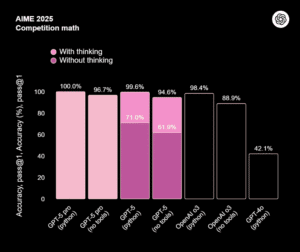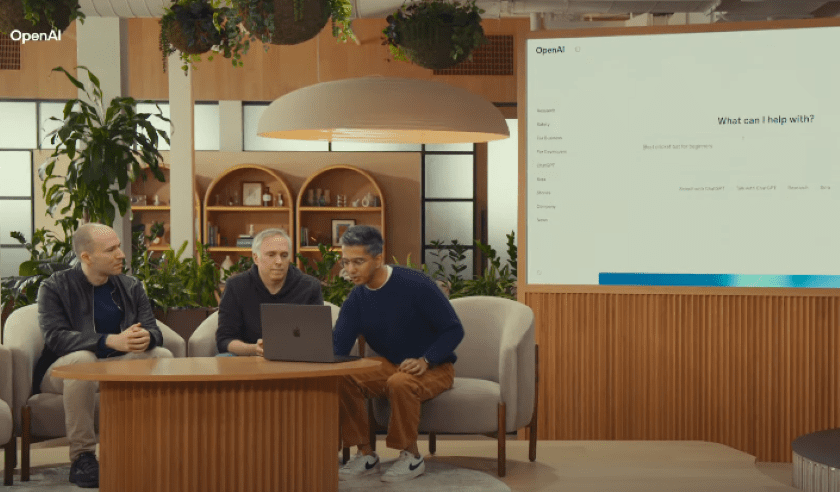AI has grown fast in the last few years. Today, OpenAI announced GPT-5. This is their smartest and fastest model. It can help you code, write, solve math, think about health, and even look at images. GPT-5 is a single system that knows when to give quick answers and when to think longer for harder problems.
So how does it do all that so well? That’s where its two modes come in.
One Model, Many Modes
GPT-5 blends speed with deep thinking. It has two main modes:
Quick Mode – For simple, everyday questions, it answers right away.
Thinking Mode – For hard problems, it pauses to work through steps, then gives a fuller answer.
A smart “router” decides which mode to use. It watches your words, the question’s difficulty, tool needs, and even if you say “think hard about this.” Over time, it learns from real chats and gets better at picking the right mode.
Why GPT-5 Is More Useful
Speed is nice, but usefulness is key. GPT-5 beats all past models in tests for writing, coding, math, health, and vision. OpenAI also cut down on made-up facts (hallucinations) and over-flattery (sycophancy).
Here are three main areas where GPT-5 shines:
1. Coding
Writes clean, responsive websites, apps, and games from one prompt.
Pays attention to design basics like spacing, fonts, and white space.
Finds and fixes bugs in large codebases quickly.
2. Creative Writing
Turns rough ideas into clear, engaging writing with rhythm and depth.
Handles hard rules—such as keeping iambic pentameter—while sounding natural.
Helps with everyday tasks: drafting reports, emails, or memos.
3. Health
Scored highest ever on HealthBench, an evaluation made with doctors.
Flags potential concerns and asks smart questions.
Adapts answers to your context, knowledge level, and location.
Reminds you it is not a substitute for a medical professional.
Chart: GPT-5’s Key Benchmark Scores

GPT-5 accuracy on math (AIME) – photo courtesy of OpenAi
This chart shows GPT-5’s accuracy on AIME (American Invitational Mathematics Examination) problems, highlighting how well the model performs on challenging high school-level math questions.
And that’s just math—GPT-5 shines across the board.
On real tasks, GPT-5 set new records:
Coding: 74.9% on SWE-bench Verified.
Vision: 84.2% on MMMU, a test of multimodal reasoning.
These scores mean GPT-5 gives more correct, detailed, and helpful answers. It follows instructions better and uses tools step by step when needed.
But raw performance isn’t everything. GPT-5 is also built to be honest and clear.
It admits when it doesn’t know something.
It warns if a question is missing details.
It labels its own uncertainty clearly.
To make interactions more natural, GPT-5 now offers built-in conversation styles.
Four New Chat Styles
Cynic: A bit sarcastic, with quick jokes.
Robot: Short, precise, no fluff.
Listener: Warm, patient, encouraging.
Nerd: Detailed, enthusiastic about facts.
Strong Safety Measures
GPT-5’s Thinking Mode is powerful enough to help in biology. To prevent misuse, OpenAI built extra safeguards:
Threat modeling with experts like CAISI and UK AISI.
Safe-completion training so it refuses harmful requests.
Always-on monitors to catch risky outputs.
Clear rules and enforcement when those rules break.
These steps protect both researchers and the public.
GPT-5 Pro for Tough Tasks
For the hardest jobs, there is GPT-5 Pro. It uses more computing power and thinks even longer. In tests, experts preferred GPT-5 Pro over standard GPT-5 Thinking 67.8% of the time and saw 22% fewer major errors.
Now that you know what it can do, here’s how to try it for yourself.
How to Get Started
GPT-5 is now the default in ChatGPT:
Free users get limited access then fall back to GPT-5 Mini.
Plus subscribers enjoy higher daily limits.
Pro subscribers can use GPT-5 and GPT-5 Pro without limits.
Teams, Enterprise, Edu plans start next week.
Just open ChatGPT, type your question, and let GPT-5 choose the best mode. Paid users can also pick “GPT-5 Thinking” or “GPT-5 Pro” in the model menu.
Featured image via Screengrab








